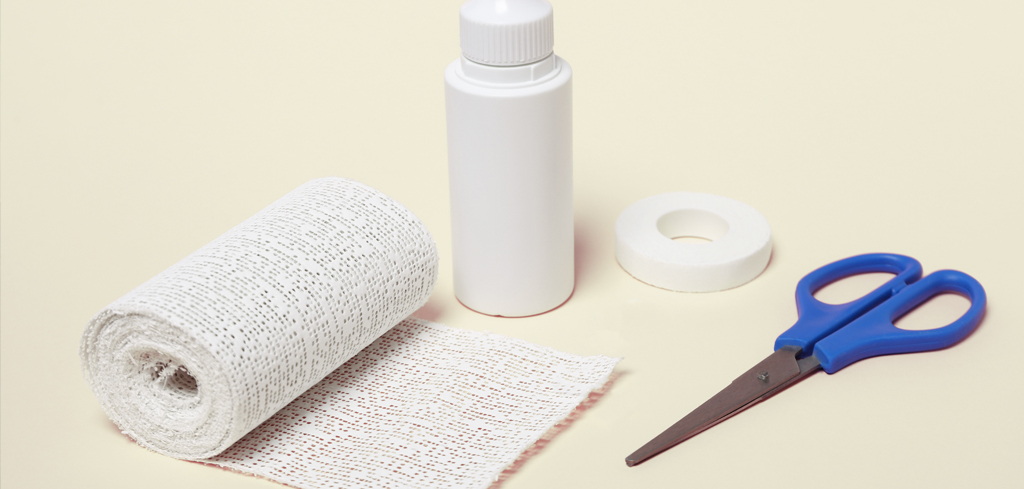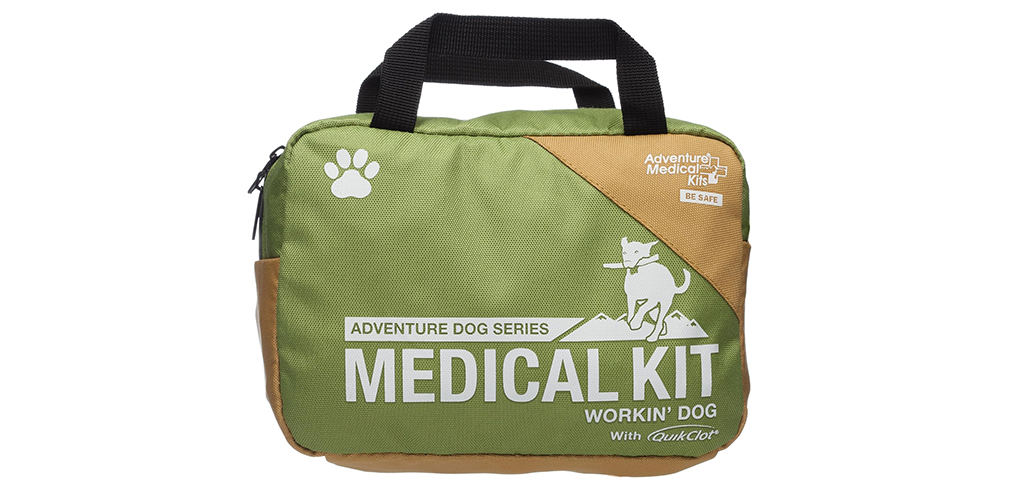The Essential Hunting Dog First Aid Kit
As a hunting dog owner, the health and safety of your canine companion is of utmost importance, especially when out in the field. Accidents and injuries can happen unexpectedly, and being prepared with the right first aid kit can make all the difference in quickly addressing any issues and ensuring your hunting partner’s well-being.
In this guide, we’ll discover the essential components of a well-stocked hunting dog first aid kit, equipping you with the knowledge to handle a wide range of potential emergencies and keep your hunting companion healthy and happy on your next hunt.

Understanding the Unique Needs of Hunting Dogs
Hunting dogs, such as Chesapeake Bay Retrievers, English Springer Spaniels, German Wirehaired Pointers, and Labrador Retrievers, are bred and trained to excel in various hunting scenarios. These energetic, eager-to-please breeds often push their limits, tackling rugged terrain, dense underbrush, and extreme weather conditions in pursuit of their quarry. As a result, they face a unique set of health and safety challenges that require specialized attention and care.
Recognizing Common Hunting-Related Injuries
Hunting dogs may encounter a variety of injuries, from cuts and abrasions to sprains, strains, and even more serious issues like snake bites or heat exhaustion. By familiarizing yourself with the most common ailments, you can be better prepared to address them promptly and effectively.
Cuts and Lacerations
Navigating through thick brush and encountering sharp objects can lead to cuts and lacerations on your hunting dog’s paws, legs, or body. Proper wound care is essential to prevent infection and promote healing.
Sprains and Strains
The intense physical demands of hunting can result in sprains or strains, particularly in the joints and limbs. Prompt treatment is crucial to avoid long-term complications.
Puncture Wounds
Thorns, quills, and other sharp objects can cause painful puncture wounds that require immediate attention to prevent complications.
Heat Exhaustion and Hypothermia
Hunting in extreme temperatures, whether hot or cold, can lead to life-threatening conditions like heat exhaustion or hypothermia. Monitoring your dog’s body temperature and taking swift action are critical.
Snake Bites
In certain regions, the risk of snake bites is a serious concern for hunting dogs. Rapid identification and treatment of a snake bite can mean the difference between life and death.
Building the Ultimate Hunting Dog First Aid Kit
Assembling a comprehensive first aid kit tailored to the unique needs of hunting dogs is a crucial step in ensuring their safety and well-being. By including the right supplies and equipment, you’ll be equipped to handle a wide range of emergencies, giving you peace of mind and the ability to provide prompt, effective care for your canine companion.

Essential First Aid Kit Components
Wound Care Essentials
- Sterile gauze pads and rolls
- Self-adhesive bandages
- Medical tape
- Antiseptic wipes
- Antibiotic ointment
Temperature Regulation
- Digital thermometer
- Hot and cold packs
Injury Management
- Tweezers and hemostats
- Trauma scissors
- Nail clippers
- Skin stapler (with caution and veterinary guidance)
Emergency Supplies
- Tourniquet for dogs
- Celox or other blood-clotting agent
- Saline eye wash
- Emergency blanket
Protective Gear
- Latex or nitrile gloves
Reference Materials
- Veterinarian-approved emergency field guide
If you’d like to save time, consider purchasing a premade kit like the Field Trauma Kit or Adventure Dog Series Medical Kit.

Organizing and Storing Your Kit
Ensure your hunting dog first aid kit is easily accessible and well-organized. Consider a waterproof, durable container that can be conveniently stored in your hunting gear or attached to your dog’s harness or vest. Regular inventory checks and restocking of supplies will keep your kit ready for any eventuality.
Preparing for Emergencies: Training and Protocols
Owning a hunting dog comes with the responsibility of being prepared for emergencies. In addition to assembling a comprehensive first aid kit, it’s crucial to educate yourself on proper emergency response protocols and techniques.
First Aid Training for Hunting Dog Owners
Invest in first aid training specific to canines, either through a local veterinary clinic or an online course. This will equip you with the knowledge and skills to assess injuries, administer treatment, and recognize when professional veterinary care is needed.
Establishing Emergency Protocols
Familiarize yourself with the signs and symptoms of common hunting-related injuries and illnesses, so you can quickly identify and address any issues that arise. Additionally, research the location of the nearest emergency veterinary clinic along your hunting routes and keep their contact information readily available.
Practicing Emergency Drills
Regularly practice emergency scenarios with your hunting or gun dogs, simulating different types of injuries or illnesses. This will help you maintain a calm, collected demeanor and ensure a smooth, efficient response should a real emergency occur.
Navigating Specific Hunting Dog First Aid Situations
While a well-stocked first aid kit and proper training are essential, it’s also crucial to understand how to handle specific emergencies that may arise during a hunt.
Addressing Cuts and Lacerations
Promptly clean the wound with antiseptic wipes, apply antibiotic ointment, and bandage the area to prevent infection. Monitor the wound for signs of healing and seek veterinary attention if the injury is severe or does not show signs of improvement.
Managing Sprains and Strains
Immobilize the affected limb, apply a cold pack to reduce swelling, and monitor your dog’s condition. If the injury persists or worsens, consult a veterinarian.
Removing Thorns, Quills, and Other Punctures
Gently use tweezers or hemostats to remove any foreign objects, taking care not to push them in deeper. Clean the area and apply antibiotic ointment before bandaging.
Addressing Heat Exhaustion and Hypothermia
For heat exhaustion, lower your dog’s body temperature by applying cool (not cold) water, offer small amounts of water to drink, and seek veterinary care. For hypothermia, wrap your dog in an emergency blanket and gradually warm them, avoiding sudden temperature changes.
Responding to Snake Bites
Remain calm, immobilize the affected limb, and seek immediate veterinary attention. Do not attempt to suck out the venom or apply a tourniquet.
Providing Supportive Care
In any emergency, monitor your dog’s vital signs, keep them calm and comfortable, and be prepared to provide supportive care, such as administering fluids or maintaining body temperature, until professional help arrives.
Frequently Asked Questions
Q: How often should I check and restock my hunting dog first aid kit? A: It’s recommended to check your first aid kit before each hunting trip and restock any depleted or expired items. Additionally, perform a thorough inventory and resupply at the beginning of each hunting season.
Q: Can I use the first aid supplies in my kit to treat myself or other humans? A: Yes, many of the items in a hunting dog first aid kit, such as gauze, bandages, antiseptic wipes, and scissors, can be used to treat minor injuries in humans as well. However, it’s important to consult a medical professional for any serious injuries or illnesses.
Q: Do I need special training to use a skin stapler on my hunting dog? A: Yes, the use of a skin stapler should be done with caution and only after consulting your veterinarian. Some veterinarians may not recommend the use of skin staplers, as improper application can cause further harm. It’s essential to receive proper training and guidance from a professional before attempting to use a skin stapler on your hunting dog.
Q: What should I do if my hunting dog suffers a serious injury or illness while in the field? A: If your dog sustains a severe injury or displays concerning symptoms, such as difficulty breathing, uncontrolled bleeding, or altered consciousness, immediately contact your veterinarian or the nearest emergency animal hospital. Provide first aid to the best of your abilities, but do not hesitate to seek professional medical care for your canine companion.
Q: How can I ensure my hunting dog’s safety during extreme weather conditions? A: In hot weather, monitor your dog’s body temperature, provide ample water, and limit their activity to prevent heat exhaustion. In cold conditions, keep them dry, insulate them with appropriate gear, and watch for signs of hypothermia. Always be prepared with hot and cold packs in your first aid kit to help regulate your dog’s body temperature.
By preparing a comprehensive hunting dog first aid kit and educating yourself on proper emergency response protocols, you can help ensure the health and safety of your canine hunting partner, allowing you both to focus on the thrill of the hunt with peace of mind.

